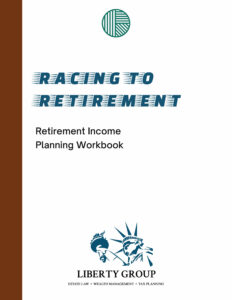Pay Off Debt or Invest? Here’s What to Consider in 2025
What if I told you that building wealth isn’t just about how much you invest—but about what’s quietly draining your progress? You wouldn’t try to inflate a balloon with a hole in it… but that’s exactly what many people do when they ignore their debt.
Hi, I’m Claire Hollander, Wealth Advisor at Liberty Group, a California-based wealth management firm focusing on estate law, taxes, and retirement planning. If you’ve ever felt like you’re doing all the right things—saving, investing—but not getting ahead, there’s a reason. In today’s video, we’re pulling back the curtain on the hidden friction between debt and investing, and how you can flip the script for long-term success.
Debt doesn’t just sit quietly in the background—it compounds, limits, and delays your financial freedom. Whether it’s credit cards, student loans, or auto payments, carrying high-interest debt can make it harder to invest, save, or plan for your future.
In fact, Gen X carries the highest average debt, followed by millennials and baby boomers. But no matter your age, high-interest debt can quietly erode your financial security over time.
Imagine earning a 7% return on an investment, but paying 20% interest on a credit card balance—that math doesn’t add up!
Debt isn’t just personal— it’s regional, generational, and economic. States like California, Maryland, and Massachusetts report some of the highest household debt levels, while Mississippi and West Virginia are on the lower end. But what’s changing is how younger generations view debt.
Post-pandemic, Gen Z and millennials are redefining financial independence. Millennials and Gen Z are starting to rethink spending and prioritizing savings. They’re trading status spending for sustainability. The question is: Are you still operating with an outdated money mindset?
Here’s the truth—paying off debt isn’t just about math. It’s about behavior. Reducing debt takes strategy, not just good intentions.
Try this:
Tackle the highest-interest debt first, even if it’s not the biggest balance. That’s what’s bleeding you most.
Automate your extra payments—so it doesn’t rely on willpower every month.
Consider debt consolidation. Streamlining payments can make it easier to manage your obligations.
Audit your “silent spenders.” Subscriptions, impulse purchases, random delivery fees—they sneak up fast.
Add fuel with a side income. Even an extra $200/month can change your timeline dramatically.
Once debt is under control, it’s time to shift from defense to offense. But investing isn’t about “picking winners”—it’s about building a system that works whether the market’s hot or cold.
Think of your portfolio like a garden: some things bloom fast, some slow, and some protect against storms. The key is diversification—balancing different asset types to manage risk.
Stocks, bonds, and alternative assets (like commodities or real estate funds) all play a role.
Diversification isn’t just a buzzword—it’s your personal shock absorber.
A well-balanced portfolio might include large-cap, mid-cap, and small-cap stocks, along with fixed-income assets like bonds. And for even more diversification, consider commodities, international investments, or tech sector exposure.
Markets change fast, which is why keeping an eye on economic trends can help guide your strategy. Some sectors, like healthcare, continue to grow with innovation—while others cycle through ups and downs. Understanding these shifts is key to making informed investment choices.
So—what does your path forward look like? Whether you’re crushing debt or building your next investment move, small steps today can lead to massive progress tomorrow.
Want to keep learning? My book, A Clear Path Forward, is packed with practical strategies, real-life case studies, and tools to help you take control of your finances with confidence to grow your wealth and confidence. You can grab your free copy at the link in the description.
And if this sparked an idea or gave you something to think about, hit that like button, subscribe, and tell me in the comments: What’s one money move you’re making this month?

